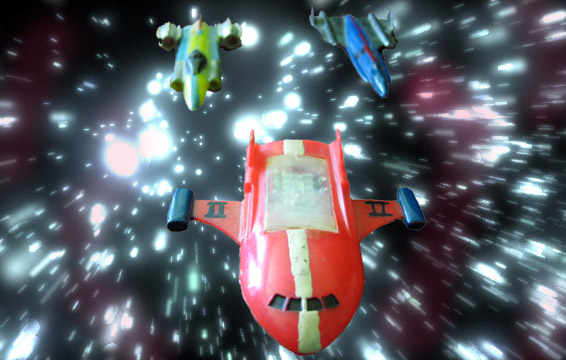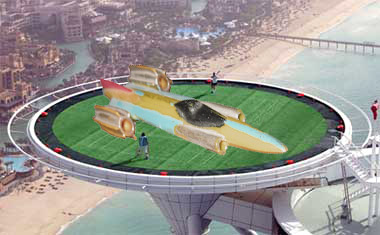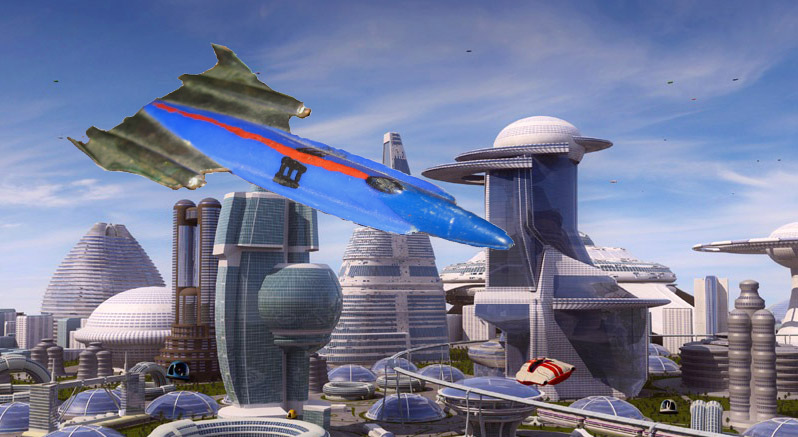 I'm sure everyone has heard the story about the child who gets a big, fancy toy for Christmas and then spends the entire morning playing with the box it came in. Sometimes the simplest toys evoke the most excitement and playful activity. That's probably true because many simple toys are fairly generic, allowing the child to impose whatever storyline he or she wants and encouraging full use of the child's imagination. That's what I always loved about the much maligned rack toys. You know, the cheap items on metal hooks in that one row of the drug store or convenience store devoted to children. They're colorful enough to get a kid's attention and inexpensive enough that a parent will buy it if the kid whines enough. These are certainly not "wait until Christmas" items, but they can often be more loved and played with than any of the high ticket items at the Toys 'R Us.
I'm sure everyone has heard the story about the child who gets a big, fancy toy for Christmas and then spends the entire morning playing with the box it came in. Sometimes the simplest toys evoke the most excitement and playful activity. That's probably true because many simple toys are fairly generic, allowing the child to impose whatever storyline he or she wants and encouraging full use of the child's imagination. That's what I always loved about the much maligned rack toys. You know, the cheap items on metal hooks in that one row of the drug store or convenience store devoted to children. They're colorful enough to get a kid's attention and inexpensive enough that a parent will buy it if the kid whines enough. These are certainly not "wait until Christmas" items, but they can often be more loved and played with than any of the high ticket items at the Toys 'R Us.While digging through a box of old stuff the other day, I came across three tiny spaceships. I didn't even realize I had saved them, but given how much fun I had with them, I'm not surprised. One was a stubby red ship with a clear plastic top, exposing its engine room. The other two were long, slender ships somewhat akin to jet aircraft. One was blue with silver wings along the back; the other was yellow with silver turbine engines mounted on the rear.
I first laid eyes on these little ships at my friend's house. He told me he got them as a "five-fingered discount" from the local department store. I think the fact that they were obtained through illicit means made them even more appealing to me. He had paint racing stripes on the ships with model paint and added the Roman numeral II to the red ship and the numeral III to the blue one. Although I never asked, my assumption was that he had been playing with the ships as if they were like the rescue ships from Thunderbirds, each bearing a number designation.
Every time I went over to my friend's house, I would dig out these little ships and fly them around the room. Finally, he told me I could have them. I guess he was bored with them and could see that I enjoyed them more than he did. There was no argument from me, and I quickly squirreled them away in my pocket.
Originally, each ship had landing gear, but I thought that detracted from their sleek looks, so I broke off the tiny wheels. The more I looked at them, the more they reminded me of the ships in the old Flash Gordon movie serials. In the old cliffhangers, Dr. Zarkov's ship was short and stubby while Ming the Merciless's ships were long and sleek. Soon, I found myself playing Flash Gordon with these ships.

Of course, in my imagination, it was never as simple as just playing. I had an imaginary television network, and the ships lead me to produce a Flash Gordon summer replacement series during the summer of 1977 (what it was replacing, I have no idea). Every weeknight at 7 p.m., I went into the basement to act out a new episode. Playing the role of Flash and reacting to imaginary characters around me, I made use of whatever was available to perform the story, so a car antenna became my sword, my brother's grease gun became my ray gun, and an old floor-model radio from the 1920s served as the controls of my space ship. When it came to the point in the show where special effects shots of the space ships were needed, I would pick up my tiny plastic craft and zip them around the basement in epic dog fights.
Influenced by the chapter structure of old serials, I planned for the series to end at a specific point, which I believe was around the end of July, if memory serves. I can still recall bouncing around on the day beds in our "club" basement area during the climatic sword fight between Flash and Ming. Just like in the serials, Ming met with some inconclusive fate (fell into a pit or something), thus leaving an opening for Ming to return for future battles with Flash. Unfortunately, the series was never renewed. I guess I lost interest in playing the blonde adventurer.
 A few months later, I started a new series called Aurora, and used the blue spaceship as the eponymous interstellar craft. Since most of my TV show ideas were rip offs of other shows or movies that I liked, Aurora was a variation on Star Trek. More specifically, I was influenced by the early Star Trek comic books produced by Gold Key where the gadgets and interior design of The Enterprise were much cruder in appearance than the show itself. My idea for Aurora was to have a ship exploring the galaxy which was of an earlier era when the technology was less advanced and the characters more fallable. It actually bore a striking resemblance to the Enterprise TV show which aired a few years ago.
A few months later, I started a new series called Aurora, and used the blue spaceship as the eponymous interstellar craft. Since most of my TV show ideas were rip offs of other shows or movies that I liked, Aurora was a variation on Star Trek. More specifically, I was influenced by the early Star Trek comic books produced by Gold Key where the gadgets and interior design of The Enterprise were much cruder in appearance than the show itself. My idea for Aurora was to have a ship exploring the galaxy which was of an earlier era when the technology was less advanced and the characters more fallable. It actually bore a striking resemblance to the Enterprise TV show which aired a few years ago.After acting out a full season of the series in that format, I decided it needed a radical change, so I brought on board an entirely new crew. At this time, I was really digging M*A*S*H, so I based the characters vaguely on the personnel at the 4077th. The captain was a Frank Burns-type and the helmsman was a Hawkeye-type, so they were constantly clashing on how to best resolve that week's crisis. The yeoman was like Radar, the first officer was sort of like B.J. Hunnicutt, and on and on. I enjoyed this mash up (pardon the pun) so much that I wrote a novel based on this idea when I was 14 years old. I still have the hand-written story in a composition book somewhere, but I don't have the nerve to read it.
Like most toys, the little spaceships eventually lost their appeal and they were shuffled from one storage box to another. I had lost track of them until the other day, when they brought back a flood of memories. Pretty amazing what a trio of shoplifted rack toys can do for a kid's imagination.




No comments:
Post a Comment